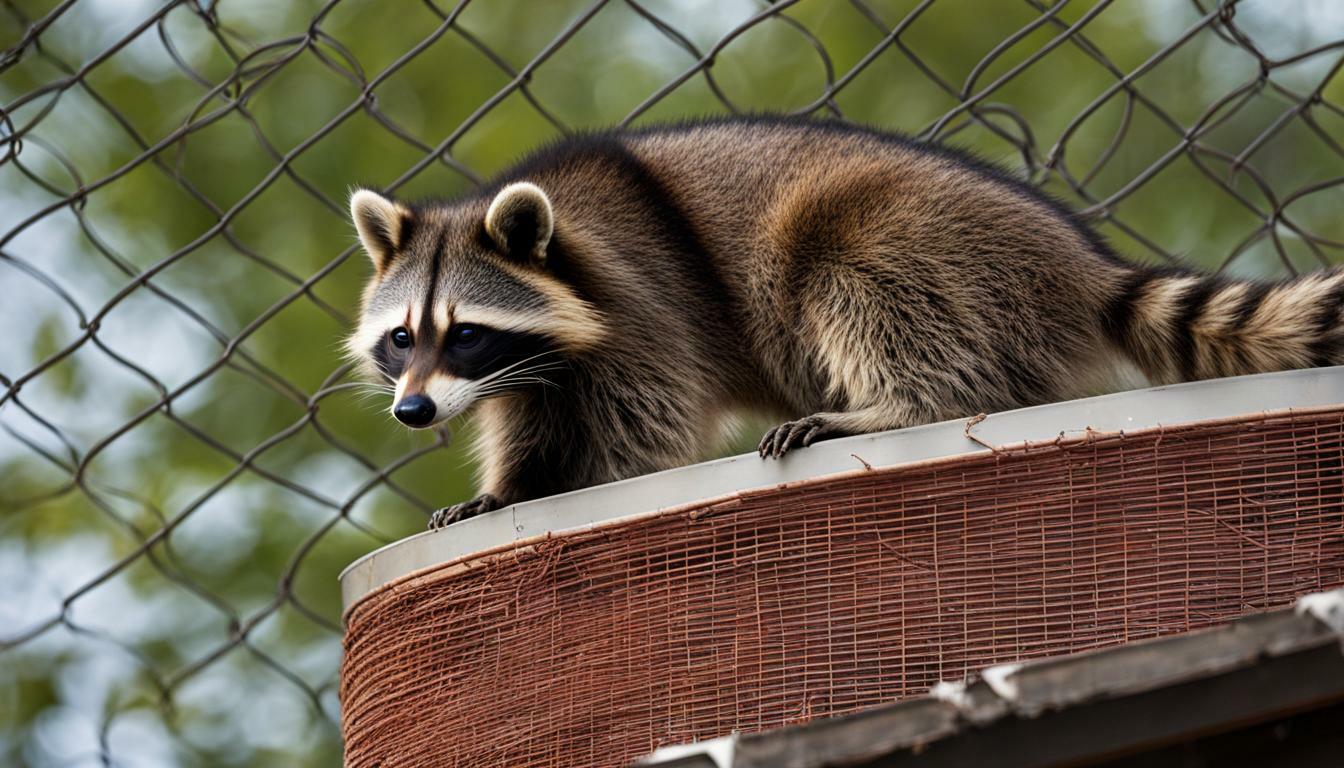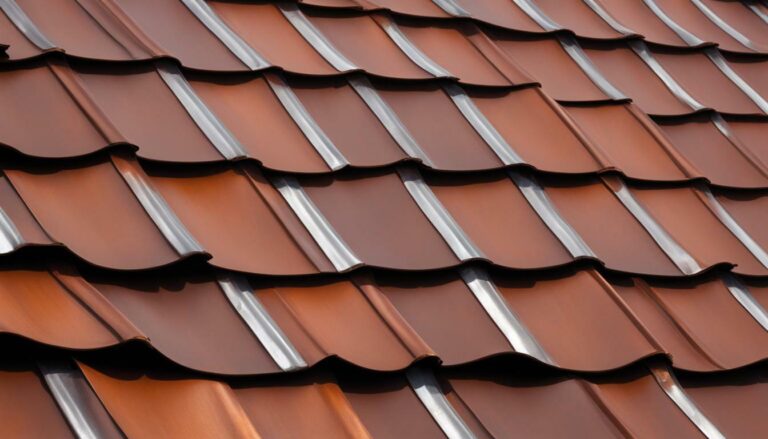Guide to Protecting Roofs from Wildlife – Secure Your Home
Protecting your roof from wildlife is crucial in ensuring the security and integrity of your home. Wildlife intrusions can lead to significant damage, including roof leaks, structural issues, and health hazards. By implementing wildlife-proof roofing solutions and following a few preventive measures, you can safeguard your home from animal intrusions.
- Regularly inspect your roof for vulnerabilities and repair any openings or damaged shingles.
- Trim nearby tree branches to prevent animals from accessing your roof.
- Install covers on roof vents and chimney to deter wildlife from entering your attic.
- Keep your gutters clean to avoid attracting animals and prevent water damage.
- Remove food sources and secure garbage cans to discourage animals from considering your property as a food destination.
Importance of Wildlife-Proof Roofing
Wildlife-proof roofing is essential for safeguarding your home against pests and preventing costly damage. Animals such as raccoons, squirrels, and birds can cause significant harm to your roof, leading to issues like structural deterioration, water leaks, and insulation damage. By implementing wildlife-resistant roof solutions, you can effectively protect your home and maintain its integrity.
One of the key benefits of wildlife-proof roofing is the prevention of animal intrusions. When wildlife gains access to your roof, they can create nests, chew through materials, and cause havoc in your attic space. These creatures are not only a nuisance but can also carry diseases and leave behind droppings that pose health risks to your household. By investing in wildlife-resistant roofing materials and deterrents, you can ensure that your home remains safe and free from these unwanted visitors.
Safeguarding your roof from pests also saves you from costly repairs in the long run. Animal damage can weaken the structure of your roof, leading to leaks and the need for extensive repairs or even a complete roof replacement. By proactively implementing wildlife-proof roofing measures, you can avoid these expensive consequences and preserve the lifespan of your roof.
Wildlife-Resistant Roofing Solutions
There are various wildlife-resistant roofing solutions available that can effectively deter animals from accessing your home. Some common options include:
- Installing metal flashing around roof edges and entry points to prevent animals from gnawing through the roof
- Using sturdy and high-quality roofing materials that animals cannot easily penetrate
- Installing chimney caps and mesh screens to prevent animal entry
- Implementing gutter guards to prevent animals from nesting and causing blockages
By incorporating these measures, you can significantly reduce the risk of wildlife damage to your roof and ensure the overall protection of your home against pests.
| Benefits of Wildlife-Proof Roofing | Solutions |
|---|---|
| Prevents animal intrusions and potential health risks | Metal flashing, sturdy roofing materials |
| Protects against structural deterioration and water leaks | Chimney caps, mesh screens |
| Saves money on costly repairs and roof replacements | Gutter guards |
Investing in wildlife-proof roofing not only provides peace of mind but also ensures the long-term durability and security of your home. By taking proactive steps to safeguard your roof from pests, you can maintain a comfortable living environment free from the damaging effects of wildlife intrusions.
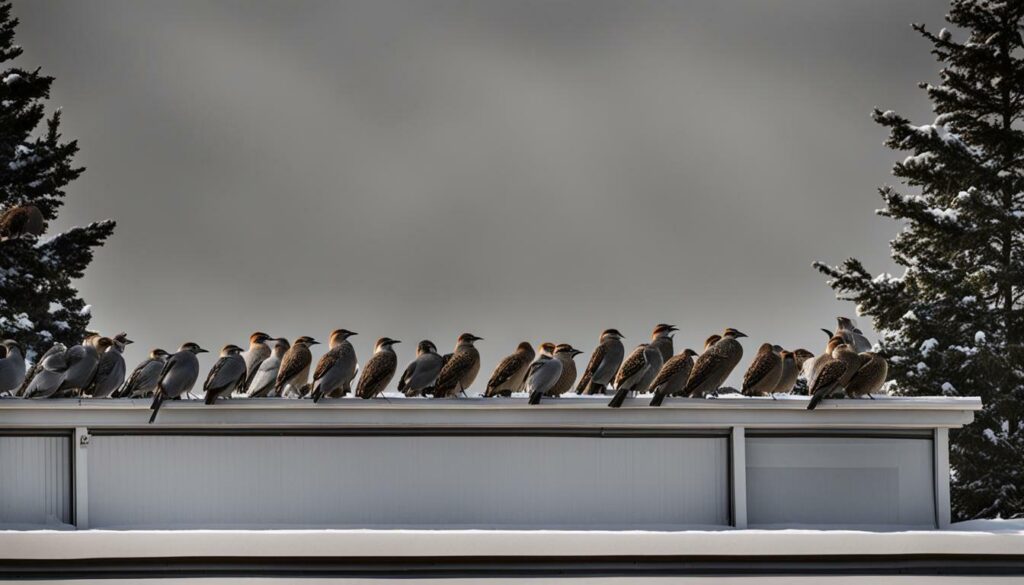
Conducting thorough roof inspections is a crucial step in protecting your home from animal intrusions and installing wildlife barriers. By regularly inspecting your roof, you can identify potential vulnerabilities and address them promptly, preventing animals from gaining access to your home. Here are some essential tips to follow when conducting roof inspections:
- Start by visually examining your roof for any signs of animal activity or damage. Look for chewed or scratched areas, nests, droppings, or other indications of pests.
- Check for any loose or damaged shingles, as these can provide entry points for wildlife. Repair or replace them as necessary to maintain a secure roof.
- Inspect the areas around chimneys, vents, and other openings. Ensure that these areas are properly sealed and protected with wildlife barriers to prevent animals from entering your attic.
- Take note of any tree branches that are in close proximity to your roof. Trim back branches to remove potential access points for animals.
- Consider enlisting the help of a professional wildlife control expert to conduct a comprehensive inspection of your roof. They have the knowledge and experience to identify hidden entrance points and provide effective solutions.
- Regularly repeat roof inspections to ensure ongoing protection against animal intrusions.
Remember, early detection and prompt action are key when it comes to protecting your roof from wildlife. By conducting regular roof inspections and implementing wildlife barriers, you can safeguard your home and enjoy peace of mind.
Roof Inspection Checklist
| Roof Area | Inspection Steps |
|---|---|
| Overall Roof | – Look for signs of animal activity – Check for loose or damaged shingles – Inspect for any openings or gaps |
| Chimneys and Vents | – Ensure proper sealing and protection – Install wildlife barriers – Clear any debris or nests |
| Tree Branches | – Trim back branches near the roof – Remove potential access points for animals |
| Attic | – Inspect for signs of animal entry – Check for chewed wires or insulation – Install proper insulation to deter wildlife |
By following this checklist and conducting regular roof inspections, you can effectively protect your home from animal intrusions and ensure a secure roof for years to come.
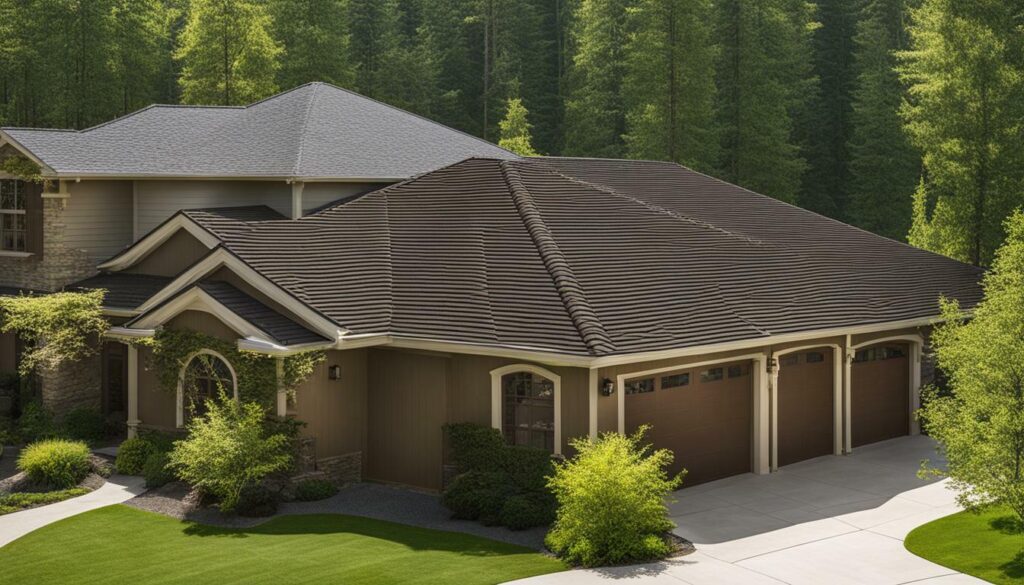
Repairing any roof openings and damaged shingles is vital in preventing wildlife from gaining access to your home. Animals such as raccoons, squirrels, birds, and even bats can easily find their way into your attic through gaps or cracks in the roof. Once inside, they can cause extensive damage to insulation, wiring, and other structures, posing a threat to both your property and your family’s health and safety.
To ensure effective wildlife damage prevention, it is crucial to address these issues promptly. Conduct regular roof inspections to identify any signs of damage or potential entry points. Pay close attention to areas where shingles are missing, loose, or damaged, as well as around vents, chimneys, and other openings. Use quality materials to repair and replace damaged shingles, ensuring a secure barrier against wildlife intrusion.
Consider installing wildlife exclusion measures, such as chimney caps and vent covers, to further protect your home. These barriers prevent animals from entering through vulnerable areas, while still allowing for proper ventilation. By taking these proactive steps, you can safeguard your property and minimize the risk of wildlife-related damage and infestation.
| Benefits of Repairing Roof Openings and Damaged Shingles: |
|---|
| 1. Prevents wildlife from accessing your home |
| 2. Protects your property from damage |
| 3. Ensures the safety and well-being of your family |
| 4. Reduces the risk of wildlife-related health hazards |
Remember, wildlife exclusion for roofs is not only about protecting your home and belongings but also about preserving the natural habitat of these animals. By taking the necessary precautions and repairing any roof openings or damaged shingles, you create a win-win situation for both you and the wildlife. Keep your roof secure, and enjoy a peaceful coexistence with the wildlife around your home.

“Repairing any roof openings and damaged shingles is a crucial step in preventing wildlife from entering your home. By addressing these vulnerabilities promptly, you can protect your property, family, and even the wildlife themselves.” – Wildlife Control Expert
Trimming Nearby Tree Branches: Protecting Your Roof from Wildlife
Protecting your roof from wildlife is essential for maintaining its structural integrity and preventing potential damage. One effective measure you can take is trimming nearby tree branches. Not only does this help deter animals from climbing onto your roof, but it also reduces the risk of branches falling and causing harm.
Trimming tree branches serves multiple purposes. Firstly, it creates a clear space between your roof and surrounding trees, making it less accessible for wildlife such as squirrels, raccoons, and birds. Secondly, it eliminates potential entry points that animals may use to gain access to your home.
By removing overhanging branches, you reduce the risk of animals damaging your roof or finding their way into your attic. Additionally, trimming tree branches also improves the overall aesthetic appeal of your property and ensures adequate sunlight reaches your roof, preventing moisture buildup and reducing the risk of moss and algae growth.
| Benefits of Trimming Nearby Tree Branches: |
|---|
| 1. Deters animals from climbing onto your roof |
| 2. Reduces the risk of branches falling and causing damage |
| 3. Eliminates potential entry points for wildlife |
| 4. Improves the aesthetic appeal of your property |
| 5. Ensures adequate sunlight reaches your roof |
Remember, when trimming tree branches, always follow proper pruning techniques and consider hiring a professional tree service if the branches are large or challenging to reach. Safety should be a top priority when performing any maintenance tasks that involve working at heights.
Protecting Your Roof: An All-Encompassing Approach
While trimming nearby tree branches is an effective measure to protect your roof from wildlife, it is important to adopt a comprehensive approach. Combine this step with regular roof inspections, repairing any openings or damaged shingles, and installing covers on roof vents and chimney. Clean your gutters regularly, remove potential food sources, and secure garbage cans. Hiring professionals for key tasks can ensure the effectiveness of your wildlife-proof roofing efforts.
By inspecting and repairing external entry points, keeping your property free of clutter, and eliminating possible hiding spots for wildlife, you can further reinforce the security of your home. Consider having your property inspected by a wildlife control expert to identify any hidden entrance points and remove any wildlife if necessary.
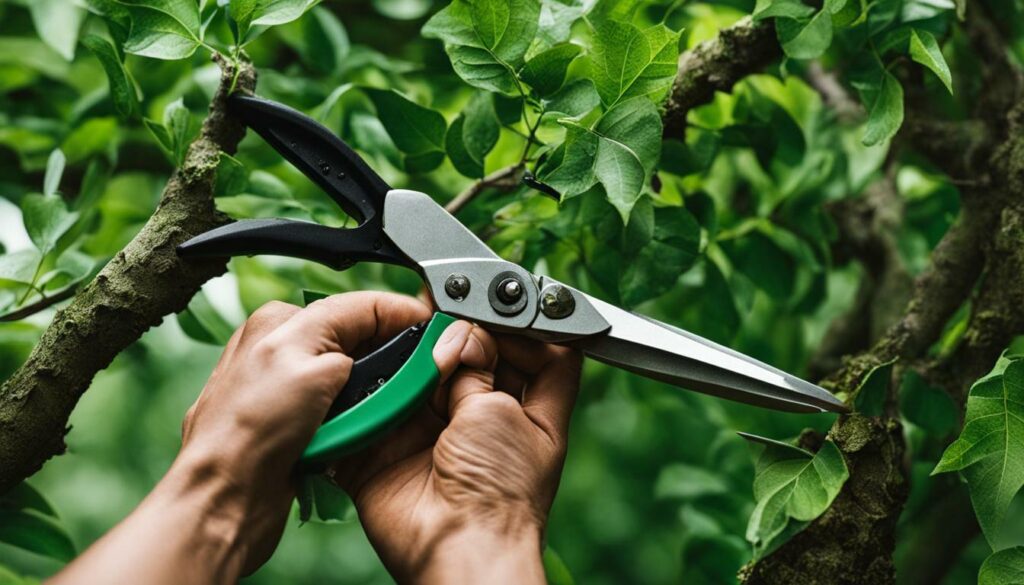
Remember, preventing wildlife intrusions is not only crucial for protecting your roof but also for maintaining the safety and integrity of your home. Implementing these measures will help safeguard your property from potential damage caused by wildlife and ensure a secure and comfortable living environment.
Installing Covers on Roof Vents and Chimney: Effective Wildlife Barriers for Roofs
Installing covers on roof vents and chimney serves as an effective wildlife barrier, preventing animals from accessing your attic. These covers act as physical deterrents, blocking entry points that animals may use to invade your home. By securing these vulnerable areas, you can protect your roof from wildlife intrusions and ensure the safety of your property.
Roof vents and chimneys provide easy access for animals like squirrels, raccoons, and birds to enter your attic. Once inside, they can cause extensive damage to insulation, wiring, and structural components. Additionally, their presence poses health risks and can lead to infestations of pests such as fleas, ticks, and parasites.
By installing covers on roof vents and chimney, you create a barrier that prevents animals from entering your attic. These covers are typically made from sturdy materials such as metal or mesh, ensuring durability and longevity. They are designed to withstand natural elements while effectively deterring wildlife.
| Benefits of Installing Covers on Roof Vents and Chimney: |
|---|
| 1. Protection against animal intrusions: Prevent squirrels, raccoons, and birds from accessing your attic and causing damage. |
| 2. Preservation of property: Safeguard your home and belongings from potential destruction and contamination. |
| 3. Reduction of health risks: Minimize the chances of disease transmission and infestation by keeping wildlife out. |
| 4. Long-term cost savings: Avoid expensive repairs and cleanup associated with wildlife intrusion. |
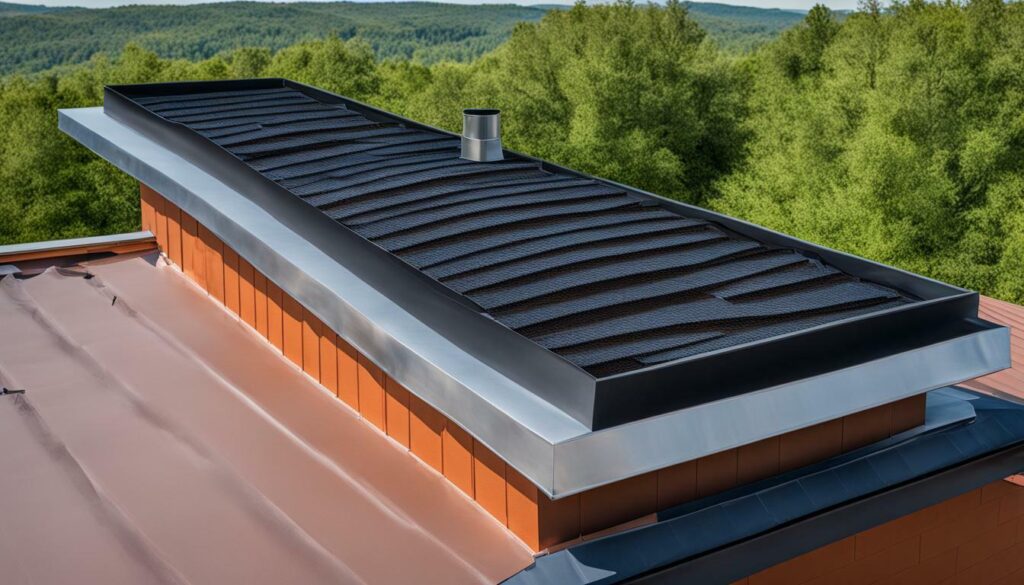
By implementing covers on your roof vents and chimney, you can effectively protect your home from wildlife damage. Ensure proper installation to guarantee optimal performance and longevity. Regularly inspect and maintain these covers to ensure they remain intact and functional. By taking proactive measures, you can safeguard your roof and maintain a wildlife-free home environment.
Regular Gutter Cleaning
Regularly cleaning your gutters is essential in preventing wildlife from being attracted to your roof and potentially causing damage. Debris such as leaves, twigs, and other organic matter can accumulate in your gutters, providing an enticing food source and nesting material for animals. By keeping your gutters clean and free of debris, you remove the temptation for wildlife to explore your property.
When cleaning your gutters, ensure that you take the necessary precautions, such as wearing protective gloves and using a stable ladder. Remove any leaves, twigs, and other debris by hand or with a scoop. Use a hose to flush out any remaining dirt or residue, directing the flow away from your home’s foundation. Ensure that downspouts are clear and functioning properly, allowing water to flow freely.

Regular gutter cleaning not only prevents wildlife intrusions but also helps maintain the integrity of your roof. Clogged gutters can lead to water accumulation, which can seep into your roofing materials and cause damage over time. By keeping your gutters clean, you ensure that rainwater is properly directed away from your roof, reducing the risk of leaks and other issues.
Additionally, cleaning your gutters provides an opportunity to inspect them for any signs of damage or wear. Look for loose or missing fasteners, sagging sections, or cracks in the gutters. Address any issues promptly to prevent further damage and ensure that your gutters continue to function effectively in protecting your home.
Removing Food Sources and Securing Garbage Cans
Removing food sources and securely storing garbage cans can effectively deter animals from considering your property as a food source and prevent them from causing damage. Animals are often attracted to homes by easily accessible food, such as open trash cans or leftover pet food. By taking simple steps to eliminate these food sources, you can significantly reduce the likelihood of wildlife intrusions.
To begin, make sure all garbage cans are tightly sealed with lids that cannot be easily opened by animals. This will not only prevent wildlife from accessing the garbage but also help to reduce odors that can attract them. Additionally, consider using wildlife-resistant containers that are specifically designed to keep raccoons, squirrels, and other pests out of your trash.
Furthermore, it is essential to remove any other potential food sources from your property. This includes not leaving pet food outside overnight and ensuring that outdoor dining areas are thoroughly cleaned. By eliminating these food sources, you are sending a clear message to wildlife that your property is not a viable food destination.

| Top Tips for Preventing Wildlife Damage: |
|---|
| 1. Securely store garbage cans with tightly sealed lids. |
| 2. Use wildlife-resistant containers designed to keep pests out of your trash. |
| 3. Don’t leave pet food outside overnight. |
| 4. Clean outdoor dining areas thoroughly to remove food scraps. |
| 5. Avoid feeding wildlife, as it can attract them to your property. |
| 6. Consider installing fencing to keep wildlife away from vulnerable areas. |
By implementing these measures and eliminating food sources, you can greatly reduce the chances of wildlife intrusions and protect your home from potential damage. Remember, prevention is key when it comes to safeguarding your property, and taking proactive steps to remove food sources will help to create an environment that is unappealing to wildlife.
Hiring Professionals for Key Tasks
Hiring professionals for key tasks such as cleaning gutters or inspecting your roof can ensure a thorough wildlife exclusion strategy for your home. These experts have the knowledge and experience to identify potential entry points and repair any vulnerabilities. Their expertise can save you time and effort while providing peace of mind knowing that your roof is protected from wildlife intrusions.
When it comes to wildlife-proof roofing, professionals can offer effective solutions tailored to your specific needs. They can install wildlife barriers, such as mesh screens or roof vent covers, to prevent animals from accessing your attic. These barriers are designed to withstand the strength and persistence of wildlife, ensuring that your home remains secure.
Benefits of Hiring Professionals
There are several benefits to hiring professionals for wildlife exclusion tasks:
- Expertise: Professionals have extensive knowledge of wildlife behavior and roofing structures, allowing them to identify potential entry points that may go unnoticed by homeowners.
- Efficiency: They have the necessary tools and equipment to complete tasks efficiently, saving you time and effort.
- Safety: Working at heights can be dangerous, but professionals are trained to handle such tasks safely, reducing the risk of accidents or injuries.
- Long-term Solutions: Professionals can provide long-term solutions that effectively deter wildlife and prevent future intrusions, giving you peace of mind.
By hiring professionals, you can ensure that your wildlife exclusion efforts are comprehensive and effective. Their expertise and specialized equipment will help safeguard your home, protecting both your property and your family from the potential damage and health risks associated with wildlife intrusions.
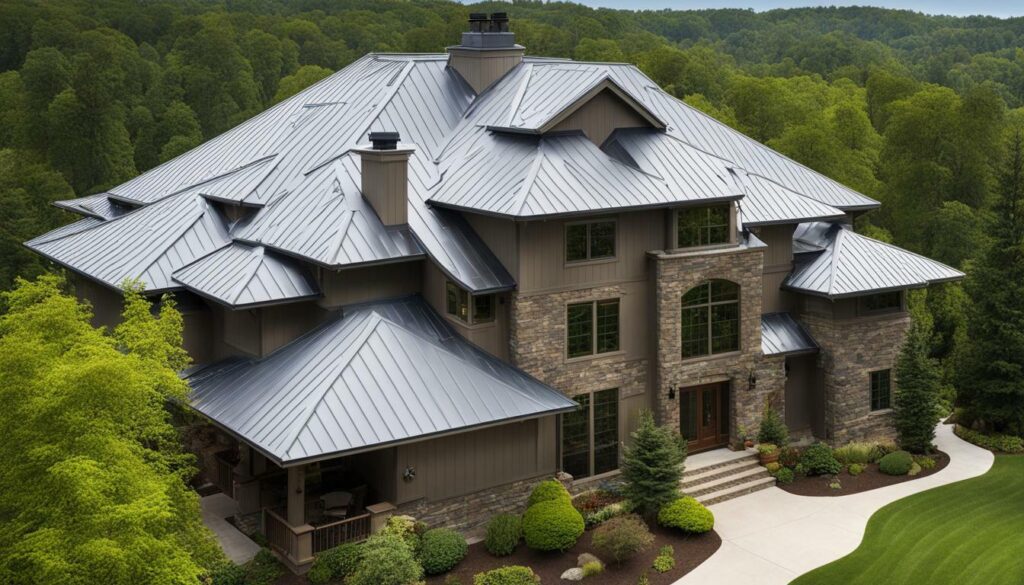
| Task | Benefits |
|---|---|
| Cleaning Gutters | Prevents water damage and eliminates food sources for wildlife. |
| Inspecting Your Roof | Identifies vulnerabilities and potential entry points for wildlife. |
| Installing Wildlife Barriers | Prevents animals from accessing your attic through roof vents and chimney. |
| Repairing or Replacing Damaged Screens or Vents | Closes off potential entry points for wildlife. |
Inspecting and Repairing External Entry Points
Regularly inspecting and repairing any external entry points is crucial in creating effective wildlife barriers for your roof. By identifying and addressing potential vulnerabilities, you can prevent animals from accessing your home and causing damage. Here are some key steps to take:
- Inspect the exterior of your home: Carefully examine the exterior walls, roof, and foundation for any gaps, cracks, or openings that could serve as entry points for wildlife.
- Repair or replace damaged screens or vents: Seal any holes in window screens and ensure that vents are properly covered to prevent animals from entering your home.
- Install chimney caps: Chimneys are often a popular nesting spot for birds and other wildlife. Install chimney caps to keep animals out while still allowing smoke to escape.
- Check for gaps around utility entry points: Inspect areas where utility pipes or wires enter your home, such as around air conditioning units, electrical boxes, or plumbing fixtures. Seal any gaps to prevent animals from entering.
By diligently inspecting and repairing these external entry points, you can create a strong line of defense against wildlife intrusions. Remember, even small openings can provide access to determined animals, so it’s essential to be thorough in your inspections and repairs.
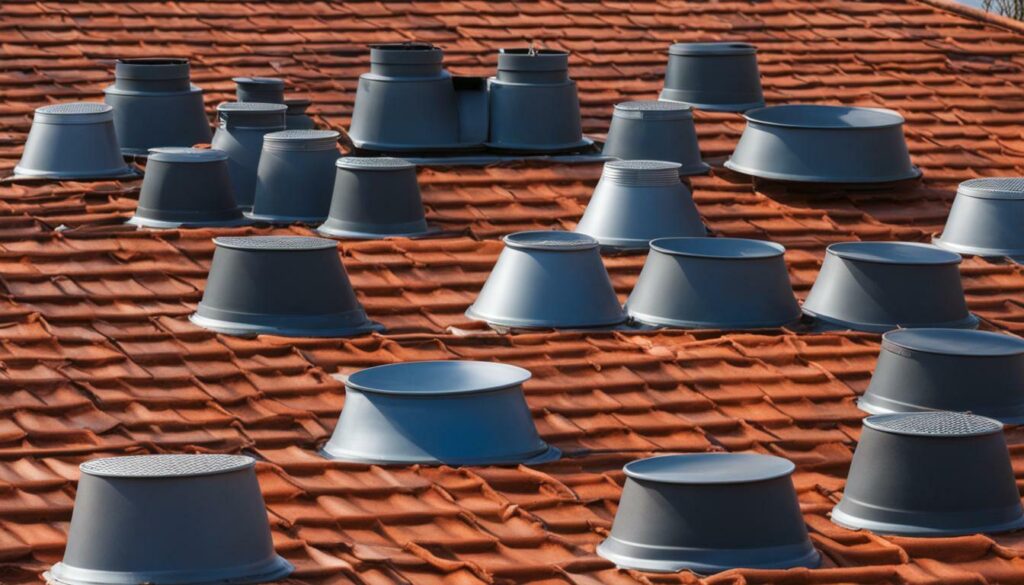 Regularly inspecting and repairing any external entry points is crucial in creating effective wildlife barriers for your roof.
Regularly inspecting and repairing any external entry points is crucial in creating effective wildlife barriers for your roof.
| Benefits of Regular Inspections and Repairs | Prevention Tips |
|---|---|
| Identify and address vulnerabilities before animals can exploit them. | – Schedule regular inspections by a professional wildlife control expert. – Use pet-safe repellents to deter wildlife from approaching your home. – Keep your property free of clutter and eliminate possible hiding spots for wildlife. – Consider installing motion-activated lights or sprinkler systems to scare away animals. |
| Prevent potential damage to your roof and property caused by wildlife intrusion. | – Trim tree branches that overhang your roof to prevent animals from accessing it. – Use sturdy and wildlife-resistant materials for your roof to discourage tampering and damage. – Keep garbage cans securely covered to minimize food sources for animals. – Store pet food indoors or in secure containers. |
| Maintain a safe and comfortable living environment for you and your family. | – Create a barrier around your property with fencing or other wildlife-proof structures. – Educate yourself about local wildlife species and their habits to better understand how to protect your home. – Avoid feeding wildlife, as it can encourage them to approach your property. – Avoid allowing pets to roam freely outdoors, as this can attract wildlife. |
Remember, wildlife exclusion for roofs is an ongoing process. Regular inspections and repairs will help ensure that your home remains protected from unwanted animal visitors. By taking proactive measures and addressing any vulnerabilities promptly, you can safeguard your roof and maintain peace of mind.
Conclusion
Protecting your roof from wildlife is essential for ensuring the security and longevity of your home. By implementing wildlife-resistant roof solutions and creating effective wildlife barriers, you can safeguard your property and enjoy peace of mind.
To start, have your roof inspected by professionals to identify any vulnerabilities. Addressing openings or damaged shingles promptly will prevent animals from accessing your home. Additionally, trimming nearby tree branches will discourage animals from climbing onto your roof.
Installing covers on roof vents and chimney is another crucial step to prevent animals from accessing your attic. Regularly cleaning your gutters will help avoid attracting animals to your roof, while securing garbage cans and removing food sources will discourage them from considering your property as a food destination.
Consider hiring professionals for tasks like cleaning gutters or inspecting your roof. Their expertise and experience will ensure effective wildlife-proof roofing. It’s also important to regularly inspect the exterior of your home for any possible entry points and repair or replace damaged screens or vents. Keeping your property free of clutter and eliminating possible hiding spots for wildlife will further protect your home.
For thorough protection, consider having your home inspected by a wildlife control expert. They can identify any hidden entrance points and remove any wildlife if necessary. By taking these measures, you can protect your roof from wildlife damage and create a safe and secure environment for you and your family.
FAQ
Q: How can I protect my roof from wildlife?
A: To protect your roof from wildlife, you can have it inspected for vulnerabilities, repair any openings or damaged shingles, trim nearby tree branches, install covers on roof vents and chimney, clean your gutters regularly, remove food sources, secure garbage cans, hire professionals for tasks like cleaning gutters or inspecting your roof, and build livestock enclosures if you have animals.
Q: Why should I trim nearby tree branches?
A: Trimming nearby tree branches helps to prevent animals from climbing onto your roof. By removing this potential access point, you can deter wildlife from attempting to enter your home.
Q: How can I keep animals from accessing my attic?
A: You can install covers on roof vents and chimney to prevent animals from accessing your attic. These barriers effectively block their entry points and protect your home from wildlife intrusions.
Q: Why is regular gutter cleaning important?
A: Regular gutter cleaning is important to avoid attracting animals to your roof. By keeping your gutters clean and free of debris, you can prevent wildlife from considering your property as a food source.
Q: Should I hire professionals for tasks like cleaning gutters or inspecting my roof?
A: Yes, hiring professionals for tasks like cleaning gutters or inspecting your roof can ensure that these tasks are done properly and effectively. Professionals have the expertise and experience to identify potential issues and implement the necessary wildlife-proof roofing measures.
Q: How can I prevent wildlife from entering my home through external entry points?
A: To prevent wildlife from entering your home through external entry points, regularly inspect the exterior of your home for any possible entry points and repair or replace any damaged screens or vents. By addressing these vulnerabilities, you can effectively deter wildlife intrusions.
